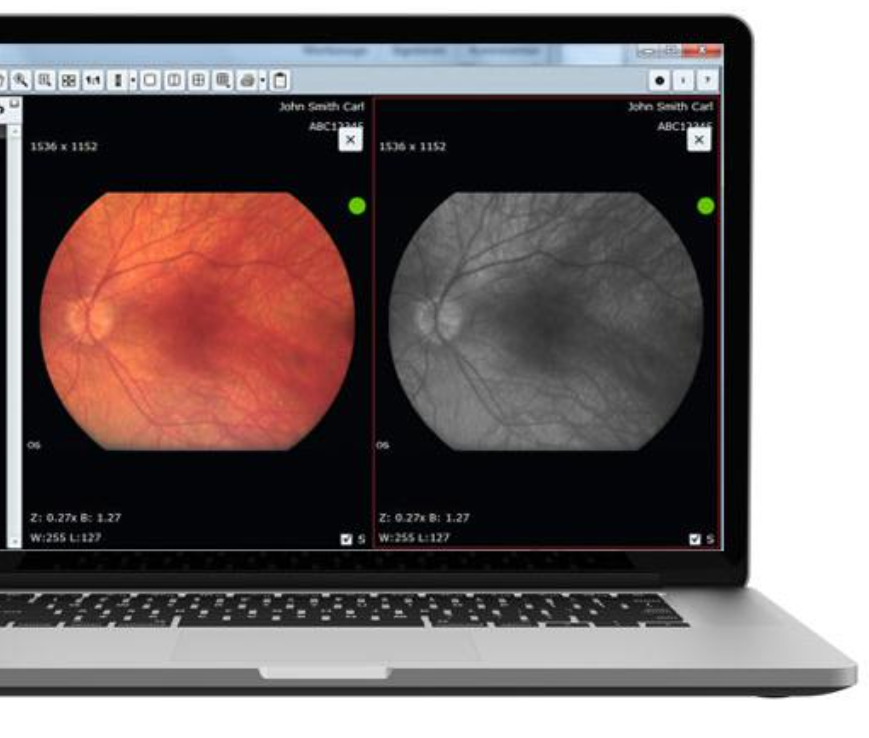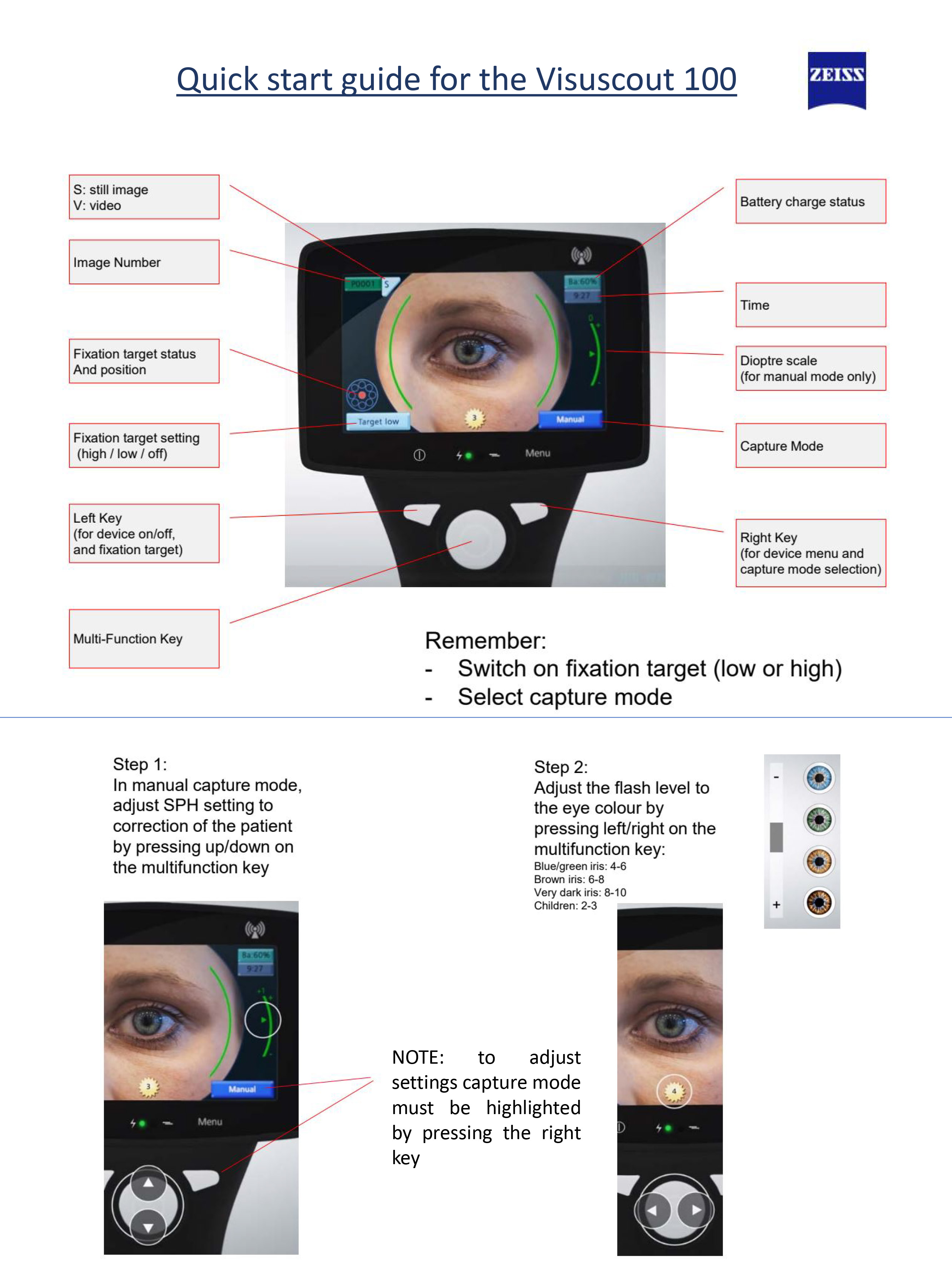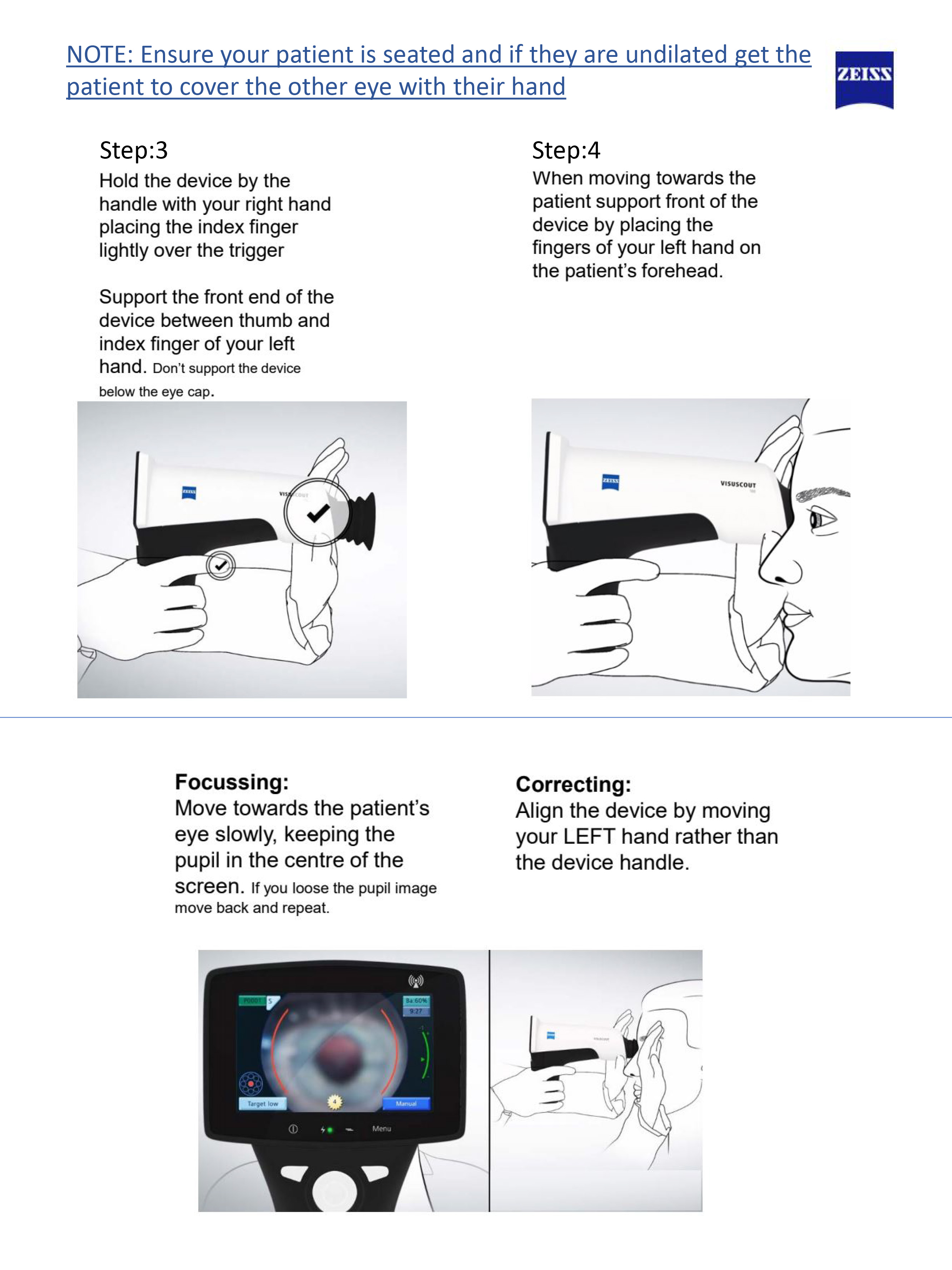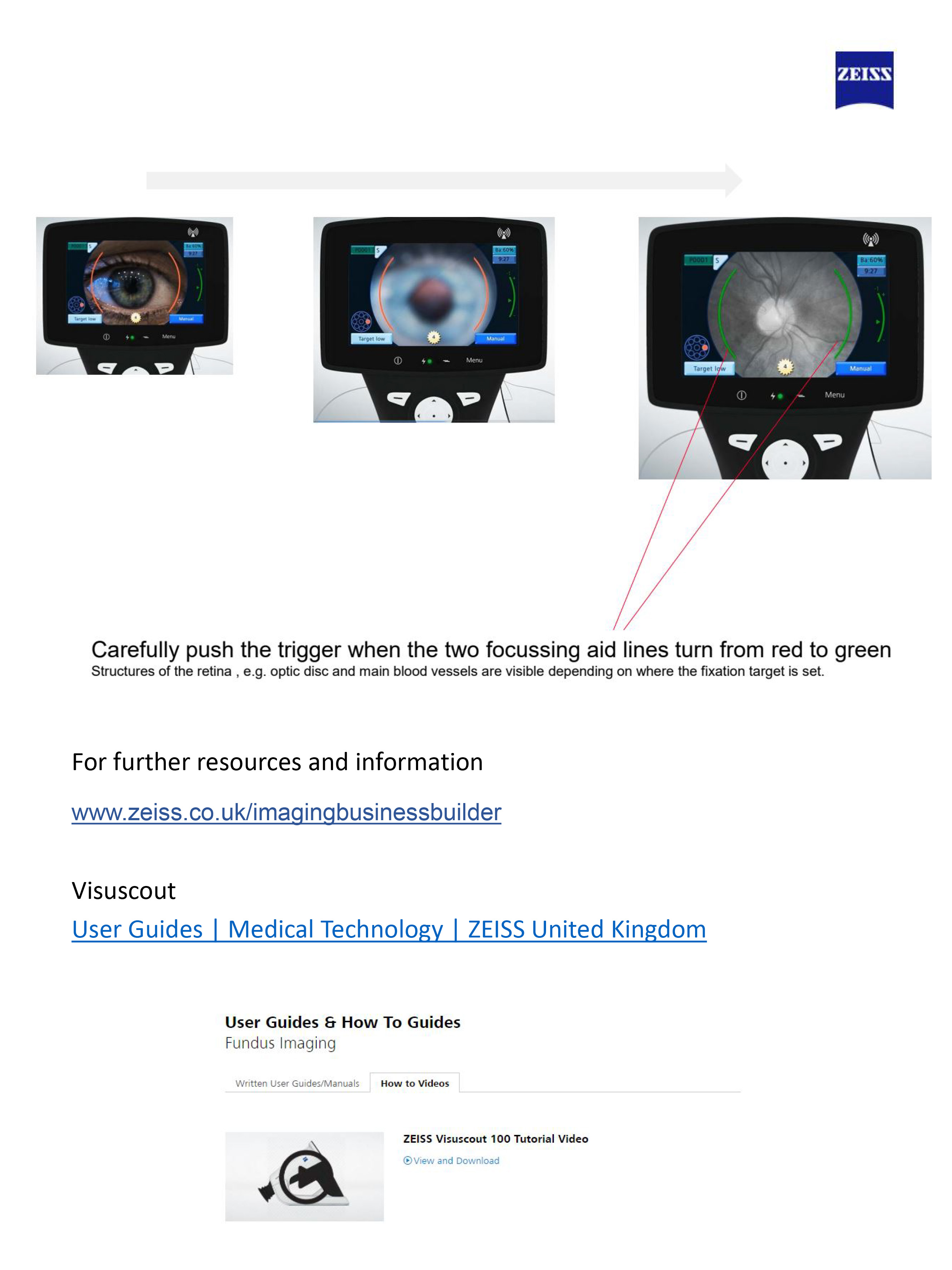Wireless flexibility for fundus imaging wherever you need it Easy capture of images and videos in a quality normally not expected of a mobile device Integrates with DICOM-based data management systems using optional viewing software Simple to operate, even for medical staff and assistants
5 MP / CMOS
Zeiss VISUSCOUT 100 Handheld Fundus Camera
VISUSCOUT 100 Handheld Fundus Camera is Reliably detecting and tracking retinal disorders is key to ensuring high-quality care and also to maintaining the vision of your patients
Simple mobile retinal imaging
With its lightweight, compact design, the ZEISS VISUSCOUT 100 allows simple retinal imaging and wireless flexibility wherever you need it:
For checkups and documentation of retinal conditions, such as diabetic retinopathy, glaucoma and macular degeneration (AMD).
As a secondary device for immobile patients.
Ideal for outreach programs, mobile eye care and satellite offices.
For general consultations, home visits and working with children.
As a simple fundus camera for small practices.
Packed into a small, rugged carrying case, the ZEISS VISUSCOUT 100 can be conveniently transported and easily fits into any practice setup. With the camera’s non-mydriatic operation and precise autofocus function, dilation of the eyes is not required. Its battery power provides added flexibility. The Wi-Fi functionality enables instant transfer of images to a PC.
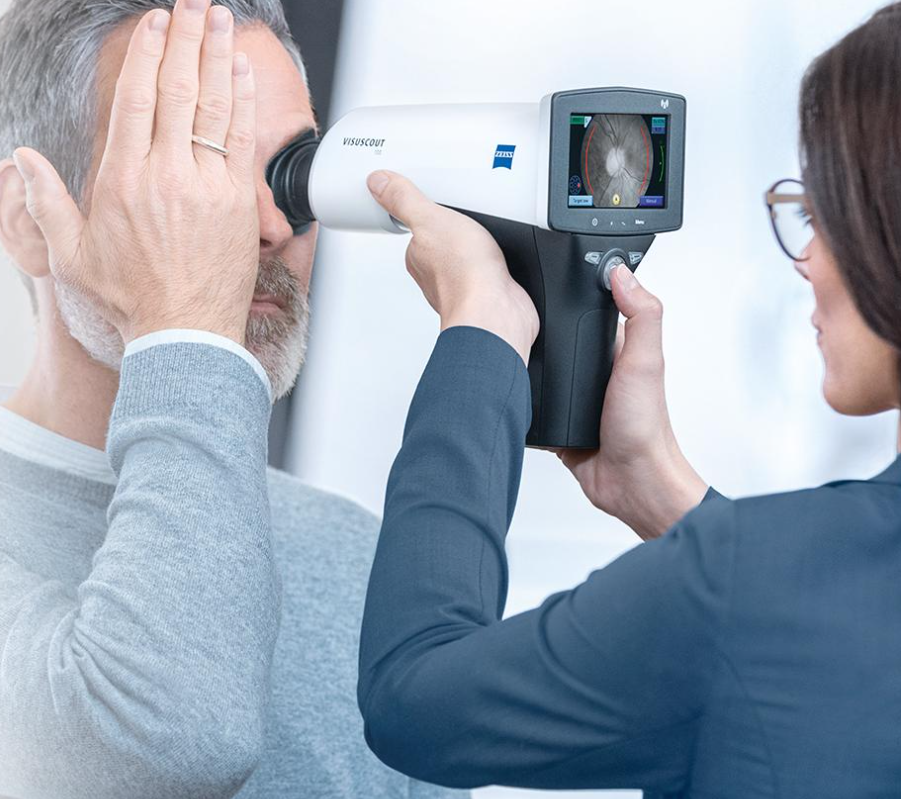
Easy capture of fundus images and videos
Take color and red-free fundus images instantly with the 40° field of view. The device fulfills all relevant ISO 10940 fundus camera standard requirements.
With its on-screen targeting aid and integrated autofocus function, using the portable retinal camera is easy and convenient. Nine internal fixation LEDs help align the patient correctly and also facilitate the capture of peripheral images.
Built-in simplicity
Operating the ZEISS VISUSCOUT 100 handheld fundus camera is simple and straightforward following a brief training session. Examinations are quickly performed and reviewed without needing to move the patient. Even non-medical staff can operate the device, enabling cost-effective image capturing prior to the examination.
